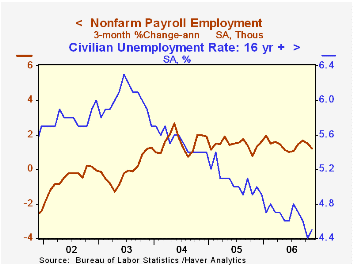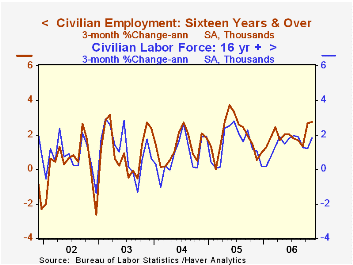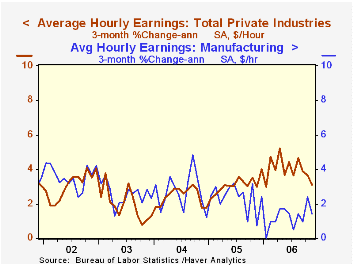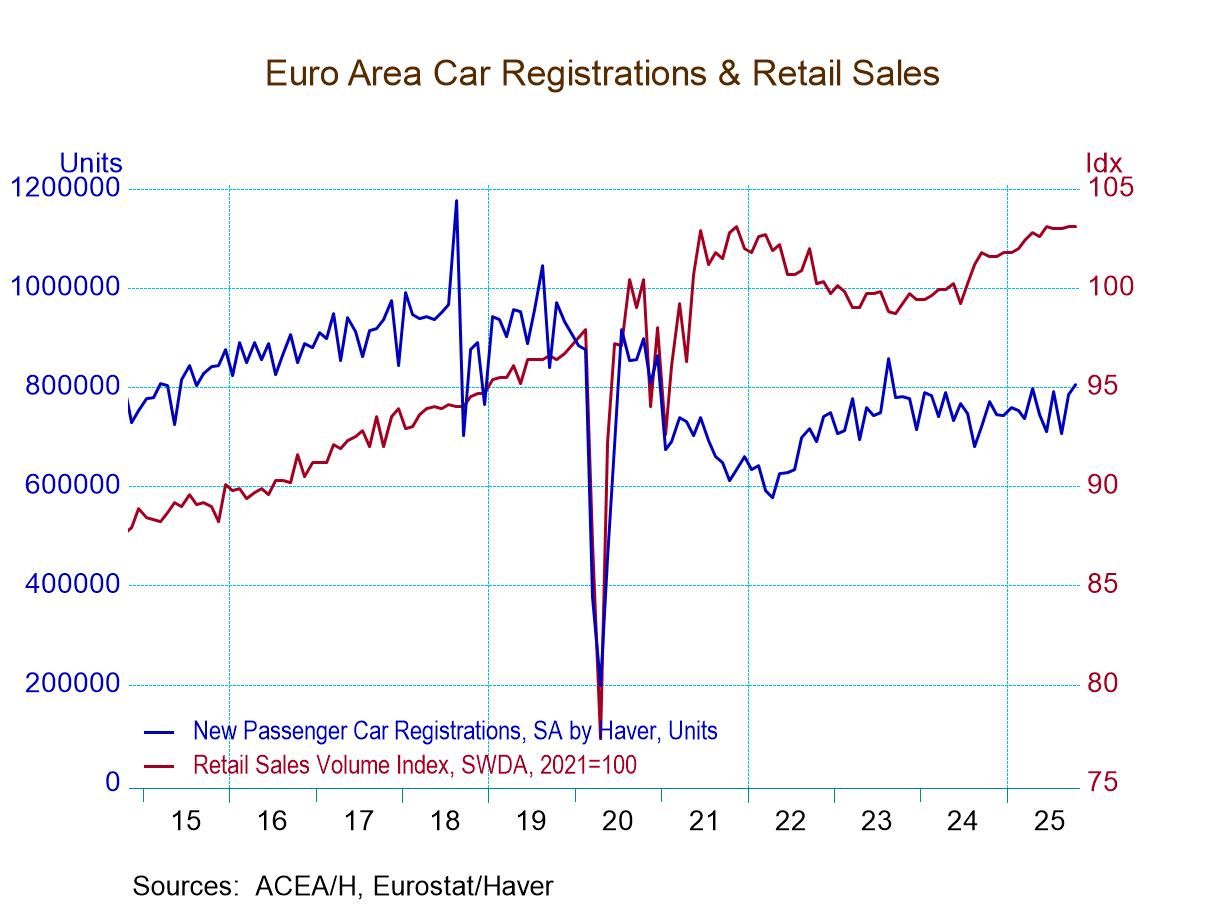 Global| Dec 08 2006
Global| Dec 08 2006Firm U.S. Payroll Report with Still More Upward Revisions
by:Tom Moeller
|in:Economy in Brief
Summary
Nonfarm payrolls in November rose 132,000 and though the gain in the prior month was reduced slightly, the net upward revision during September and October totaled 55,000 jobs. Consensus expectations for November had been for a [...]

Nonfarm payrolls in November rose 132,000 and though the gain in the prior month was reduced slightly, the net upward revision during September and October totaled 55,000 jobs. Consensus expectations for November had been for a 108,000 rise.
During 2006 payrolls have risen an average 149,000 per month versus a monthly average 165,000 during all of last year. The gain during the second half of this year in addition has been a firm 153,000 per month.
From the household jobs survey, employment gains also showed strength and posted a 277,000 (2.1% y/y) gain last month after October's 437,000 surge. Year to date employment as measured by the household survey has risen an average 253,000 per month.
The unemployment rate did tick up to 4.5% last month due to a 383,000 (1.5% y/y) surge in the labor force, but that may also be an indication of labor market strength. It reflected a 153,000 decline in the number of persons not in the labor force. That raised the labor force participation rate to 66.3%, the highest level since early 2003.
Private service-producing jobs from the establishment survey rose 154,000 (1.7% y/y). Professional & business services employment rose 43,000 (2.5% y/y) after a downwardly revised 29,000 October increase. Temporary help services jobs rose 4,800 (-0.8% y/y) but education & health services jobs rose 41,000 (2.6% y/y). Leisure & hospitality jobs increased 31,000 (2.5% y/y) and financial sector jobs gained 11,000 (1.9% y/y).
Government payrolls increased 18,000 (1.1% y/y) but most of the gain owed to a 13,000 (1.5% y/y) increase in local government jobs.
Factory sector payrolls fell 15,000 following a deepened 44,000 decline during October. Jobs in motor vehicle & parts industries fell 6,900 (-3.8% y/y) while jobs in furniture fell 5,200 (-4.0% y/y). Nondurable sector factory employment fell 2,000 (-1.2% y/y) and declines were widespread.
Construction employment dropped 29,000 (+0.7% y/y) after a little revised 24,000 decline during October. Since the August peak construction jobs have fallen 0.7%. That decline has been led by a 109,100 (-4.6%) drop in residential specialty trade contractors since this group of workers' peak employment month last February.
Average hourly earnings halved the previous month's increase and rose 0.2%. Factory sector earnings rose just 0.1% (1.4% y/y) after a large 0.4% October gain.
The workweek held at the high 33.9 hours, the highest level since 2002. As a result, aggregate hours worked so far in 4Q rose 1.5% (AR) from 3Q when they rose 1.1%.
Tracking Productivity in Real Time from the Federal Reserve Bank of new York can be found here.
| Employment | November | October | Y/Y | 2005 | 2004 | 2003 |
|---|---|---|---|---|---|---|
| Payroll Employment | 132,000 | 79,000 | 1.3% | 1.5% | 1.1% | -0.3% |
| Manufacturing | -15,000 | -44,000 | -0.4% | -0.6% | -1.3% | -4.9% |
| Average Weekly Hours | 33.9 | 33.9 | 33.8 (Nov. '05) | 33.8 | 33.7 | 33.7 |
| Average Hourly Earnings | 0.2% | 0.4% | 4.1% | 2.8% | 2.1% | 2.7% |
| Unemployment Rate | 4.5% | 4.4% | 5.0% (Nov. '05) | 5.1% | 5.5% | 6.0% |
Tom Moeller
AuthorMore in Author Profile »Prior to joining Haver Analytics in 2000, Mr. Moeller worked as the Economist at Chancellor Capital Management from 1985 to 1999. There, he developed comprehensive economic forecasts and interpreted economic data for equity and fixed income portfolio managers. Also at Chancellor, Mr. Moeller worked as an equity analyst and was responsible for researching and rating companies in the economically sensitive automobile and housing industries for investment in Chancellor’s equity portfolio. Prior to joining Chancellor, Mr. Moeller was an Economist at Citibank from 1979 to 1984. He also analyzed pricing behavior in the metals industry for the Council on Wage and Price Stability in Washington, D.C. In 1999, Mr. Moeller received the award for most accurate forecast from the Forecasters' Club of New York. From 1990 to 1992 he was President of the New York Association for Business Economists. Mr. Moeller earned an M.B.A. in Finance from Fordham University, where he graduated in 1987. He holds a Bachelor of Arts in Economics from George Washington University.






